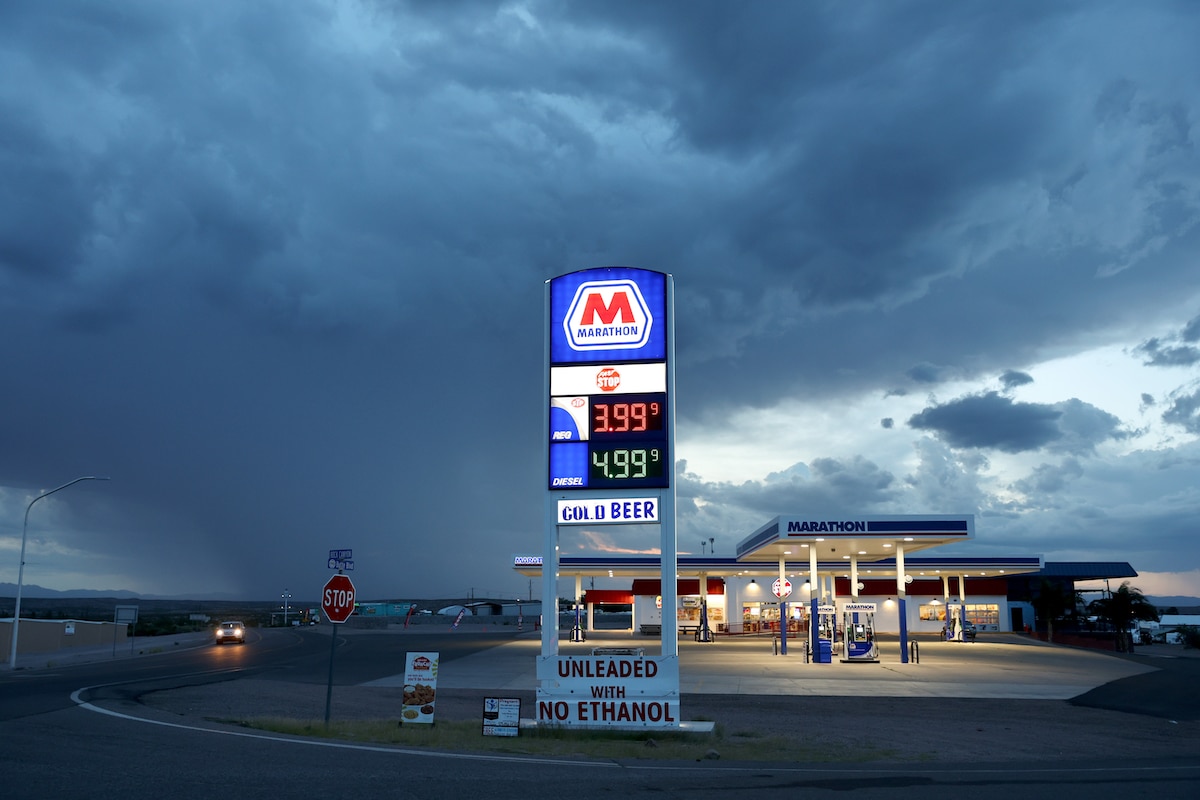Products You May Like
A gas station near the drought-stricken Elephant Butte Reservoir, as monsoon rain falls in the distance near Truth or Consequences, New Mexico on Aug. 16, 2022. Mario Tama / Getty Images
 Why you can trust us
Why you can trust us
Founded in 2005 as an Ohio-based environmental newspaper, EcoWatch is a digital platform dedicated to publishing quality, science-based content on environmental issues, causes, and solutions.
U.S. gasoline demand is unlikely to return to pre-pandemic highs, an important climate milestone since transportation is the leading contributor to the nation’s greenhouse gas emissions.
In 2018, U.S. drivers consumed a record high of nearly 392 million gallons of gas per day, according to the U.S. Energy Information Administration (IEA). Now, that number is falling as climate and fuel efficiency policies make their mark.
“It’s the ongoing replacement of old cars with more fuel efficient ones that contributes to the steady erosion in the amount of gasoline used per mile,” ESAI analyst Linda Giesecke told Bloomberg Friday.
The IEA first projected that gasoline demand had peaked in 2018 in its Annual Energy Outlook for 2021, as Reuters reported at the time. This demand declined precipitously during the initial response to the coronavirus pandemic, which included travel restrictions and an increase in remote work, as the report noted. This meant that the pandemic response decreased energy consumption more from transportation than from any other economic sector. The report further predicted that energy consumption from transportation would remain below 2019 levels through 2050 because increased fuel efficiency would counteract the uptick in travel as restrictions were lifted.
More From EcoWatch
“The pace of economic recovery, advances in technology, changes in trade flows, and energy incentives will determine how the United States produces and consumes energy in the future,” EIA Acting Administrator Stephen Nalley said at the time, as Reuters reported.
Fuel efficiency has improved over the past decade and a half because of standards set by former President Barack Obama in 2019, while President Joe Biden has proposed even tougher standards and signed the Inflation Reduction Act, which includes incentives for electric vehicles (EV), as Bloomberg observed.
However, that doesn’t mean gas will fade away quickly. While gasoline use fell from 9.31 million barrels per day in 2019 to 8.05 million in 2020, it then rebounded to 8.82 million in 2021 and then declined slightly to 8.76 million in 2022. In 2023, it is projected to fall by less than one percent to 8.74 million barrels a day.
In its recent analysis, Bloomberg said the decline in gas usage would cause short term pain for drivers as, in the transition, supply reduces faster than demand, leading to higher prices and potential shortages. As the EIA noted, gasoline is still the most commonly used fuel in light duty vehicles, though the sales of gasoline cars are projected to decrease through 2050 as EV and hybrid sales increase.
“It will take decades for gas-powered vehicles to drive off into the sunset,” Stanford University Earth system science professor Rob Jackson told Bloomberg.
However, as this process continues, it will eventually lead both to lower gas prices and lower vehicle emissions, a win-win for U.S. wallets and the climate.
Subscribe to get exclusive updates in our daily newsletter!
By signing up, you agree to the Terms of Use and Privacy Policy & to receive electronic communications from EcoWatch Media Group, which may include marketing promotions, advertisements and sponsored content.
